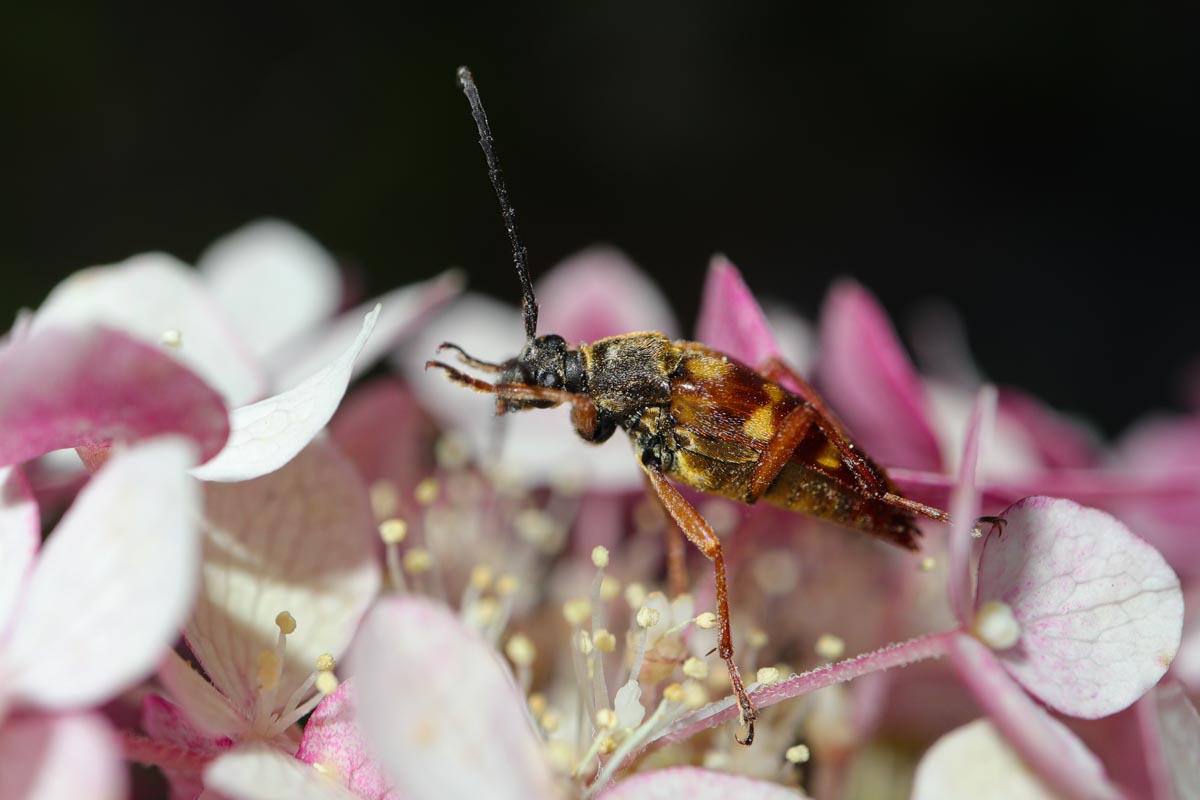Although most of my garden is either native with plants growing wild here, or introductions I have made with plants that would grow here if it was a less disturbed forest, occasionally I add plants that have value either to pollinators or to my preferences, or both.
Growing up I remember fondly a small stand of hydrangeas that greeted us on arrival at our cottage in the Adirondacks. I wanted to recreate the nostalgic feeling of the arrival of summer from my childhood. The variety my father grew wasn’t particularly attractive to pollinators, so I researched plants that would offer something to garden visitors.
As I have done before, I turned to research done by Mt. Cuba Center in Pennsylvania, since I am in a similar climate zone. Their trial of wild hydrangeas for the Mid-Atlantic region proved invaluable. They found Invincibelle Spirit II attracted the most pollinators of any mophead included in their trials. I added one of these to my garden and have not been disappointed.
Here it flowers for over a month in profusion, with blossoms that start white, turn pink, and deepen before slowly fading back to white and according to one source ultimately fading to celadon. Since celadon isn’t in my typical color vocabulary I was curious and discovered it is a pale blue green. It was named for an ancient Chinese ceramic. It is a surprisingly complex color, both gray and jade, which perfectly describes the fading flowers as the seeds mature.
As seen in this photo, the flowers have been pollinator magnets. Here one of many visitors looks like it is literally diving into a sea of pink, about to spring into summer. I am gratified to have discovered a plant that lets me and other garden denizens revel in the arrival of this lazy season.
